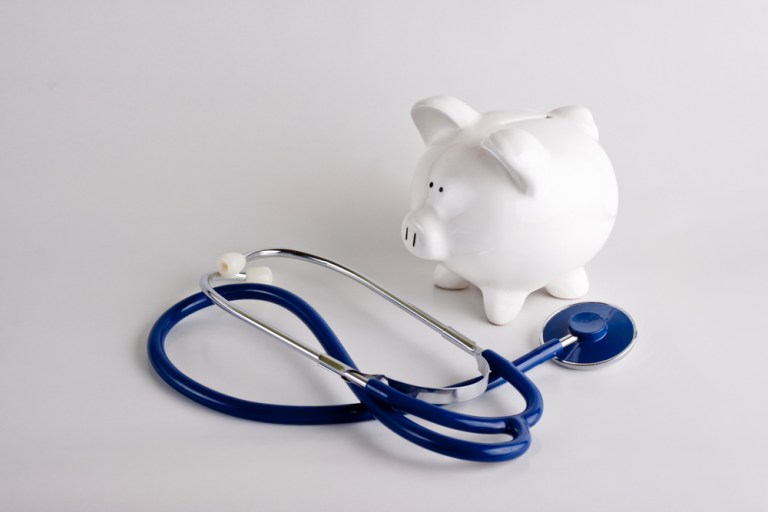The Fastest Growing Retail Categories Are…?

Anything related to health and wellness, apparently.
A new study by The NPD Group found that anything related to health and wellness — like wearable technology, basketball gear, sweats and active bottoms (AKA exercise pants), running products, outdoor sports and toys, running gear, portable beverageware — were among the fastest-growing retail categories between Dec. 2014 and Dec. 2015.
Sales of wearable technology and makeup grew by about $800 million each in 2015, while products “inspired” by basketball was an industry worth more than $400 million and running accessories came in at a little bit less than $400 million.
The trend toward wellness-related products is being fueled by Baby Boomers and millennials, according to NPD’s study.
“Boomers in their 50s, 60s and 70s are more likely than other Americans to have a medical condition. And the gap between their healthy attitudes and behaviors is closer than that of younger generations that may consider themselves invincible,” according to the NPD study.
Millennials are a much more health-focused generation than ever before, a trend that brands and retailers seem to have caught on to and are catering to.
“Millennials are demonstrating a much stronger focus on health and awareness and attention to their personal wellbeing (and a likelihood to act on these attitudes) than 18- to 34-year-olds of prior generations. This younger group helps define America’s tone, so their behaviors help to increase awareness and consciousness of health across the nation,” according to NPD’s study. “These two generations are having more dialogue about health-related topics than ever before, which catalyzes consumer curiosity and interest in health even more.”
But perhaps most surprisingly of all, despite how much consumers are purchasing and shopping for wellness-related products, the average American still considers themselves pretty healthy.
When NPD Group polled 38,914 Americans between March 2015 and Feb. 2016, 21 percent responded that they were “very healthy,” a whopping 59 percent said they had “one or two issues” but were “pretty healthy” as a whole, 15 percent said they “have a few issues and I’m somewhat unhealthy” and 6 percent responded that “I’m not very healthy at all right now.”
“Considering the 80 percent of Americans who don’t report perfect health, retail companies have a pretty big opportunity to offer products or services that help them lead healthier lives,” according to NPD’s study.
These healthy habits are also reflected in 2015’s home appliance sales. Among the high-growth products were scales, water filtration devices, rice cookers, food processors and other fresh food preparation devices. Sales of electric toothbrushes also jumped 8 percent in 2015.
The study found that all this health and wellness-related activity was also leading to healthier restaurants.
“It’s hard to miss all the vegan eateries, gluten-free bakeries and juice shops popping up across the map these days, hoping to grab a piece of the health pie (or rather, gluten-free, vegan rhubarb pie). Take younger, local chains, like Sweetgreen, Chopt, Dig Inn and The Little Beet, that offer a healthy spin on fast-casual. Or consider the popular L.A. juice shop Moon Juice that offers a ‘cosmic beacon for those seeking out beauty, wellness and longevity’ in the form of juice shots, milks and cleanse programs. If the lines at these joints during lunchtime are any indication, there’s clearly a consumer segment willing to pay more for fresh,” according to the NPD study.
“But healthy isn’t just for the mom-n-pop shops or people who can afford to pay a pretty penny. Major food service players, like Chipotle, Panera, Papa John’s, Pizza Hut, Starbucks, Taco Bell and Wendy’s, have responded to customer expectations of clean and transparent food by removing artificial additives, preservatives, flavors, colors, sweeteners, GMOs, sodium content, MSG and protein antibiotics in certain menu items. And many are making efforts to source ingredients from farms that are local, sustainable and treat animals humanely.”
As millennials grow, age and replace the Baby Boomers and Gen Xers, their focus on health and wellness is expected to deepen, which means that products related to health and wellness aren’t going away anytime soon.
“The stress and demands of life as we know it in 2016 are making it increasingly difficult to feel great,” according to the NPD’s study. “So long as American health and health care aren’t perfect, there will always be an opportunity for companies that make or sell things that improve the way people live. Whether it’s the food we eat, the stuff we put on our bodies or the possessions that surround us, any product that makes us feel or look better will spark consumer interest.”